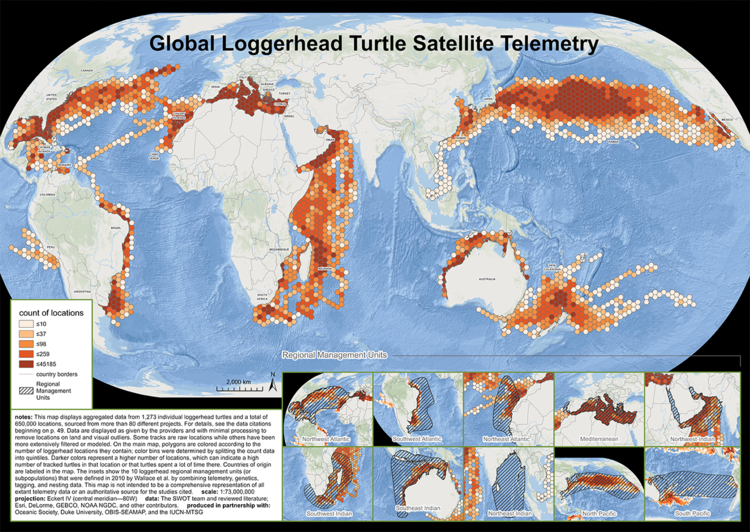
Nearly all of the 231 satellite tags from the previous studies were on turtles deployed in the West and Central North Pacific. Because tag durations average a little over a year (a few last up to 4 years), few tags reflect turtles migrating to Baja or turning back west towards Japan. There were enough tags to do some analyses of the environmental correlates of turning west (Briscoe et al. 2016), but data in the Eastern North Pacific are limited and valuable. Given that climate change is likely to alter migratory pathways, the data collected under the proposed research program would go well beyond a test of the “thermal corridor” hypothesis. Indeed, it would set the stage for a thorough analysis of the impact of climate change on the opportunities for North Pacific loggerheads to successfully complete their life history. For example, during the 2015-2016 El Niño, an estimated 70,000 loggerheads were counted in aerial surveys in the Southern California Bight near San Diego (Eguchi et al. 2018). Two hypotheses could explain this: 1) Turtles moved north from Baja into the warmer waters off San Diego; 2) Turtles recruited to San Diego from the CNP through the “thermal corridor”. Stable isotope data from skin tissue samples showed an oceanographic rather than a coastal signature (Turner Tomaszewicz et al. 2017), supporting the idea that during an El Niño, juvenile loggerheads might recruit to Southern California as well as to Baja. The previous tagging data, though extensive, only lightly cover the dynamics of this critical migratory period. The data collected under this study would set the stage for modeling and analysis on the impacts of climate variability and directional climate change on the ability to Japanese loggerheads to migrate to North American feeding grounds. It would also set the stage for the development of Species Distribution Models that could forecast where and when loggerheads are likely to enter the waters of Mexico and the US to allow more predictive approaches to the management of this endangered species. This research is important to do now given the need to forecast impacts of climate change. For an endangered species, it is imperative to study them while we can, to make the best, most informed conservation and management decisions before it’s too late.
The impact of our communication and outreach efforts will be evaluated through both quantitative and qualitative measures. First, we can measure progress through the number of clicks, inquiries, and social media engagement that our online projects receive. We can measure not only the number of people we reach but track these metrics over time to assess how well people continue to stay engaged. In addition to doing the outreach, we are also pursuing opportunities to partner with social scientists and environmental educators at Stanford to study our outreach efforts through social-ecological and communications science theory. For example, through coordinated outreach efforts across US, Japan, and Mexico, we can investigate cross-cultural communication to assess how different values and perspectives on species biodiversity can impact effective messaging strategies based on regional context. These research projects would provide another metric of project evaluation, and we would be excited to collaborate with National Geographic to further expand our outreach efforts and evaluation metrics.
